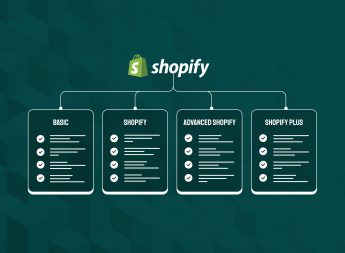Why Your Shopify Store Needs 1-Click Checkout

There are many factors that affect your Shopify store’s conversion rate, but one of the most important is the checkout process. If your Shopify checkout process is long, complicated, or just isn’t user-friendly, it’s going to hurt your conversion rate. That’s why it’s so important to make the checkout process as smooth and easy for the customer as possible. This article will discuss why 1-click checkout is the best option for your Shopify store and how to implement it.
One-Click Checkout – The Secret to Higher Conversions
1-click checkout is exactly what it sounds like: a checkout process that can be completed in one click. Instead of having to fill out forms, input shipping information, and choose a payment method, customers can simply click a button and be done.
Checkout optimisation has been shown to increase conversion rates and it’s not hard to see why. 97% of customers have at some point backed out of making a purchase simply because it was inconvenient for them. 1-click checkout makes the purchase process so easy and seamless that there’s little chance of customer drop-off. If you’re using a Shopify development company to build your Shopify store, one of their most important jobs is to ensure that the checkout process is as smooth and easy as possible for your customers.
How Does 1-Click Checkout Work?
One-click checkout was made famous by the biggest player in eCommerce — Amazon. When Amazon first filed its patent for 1-click technology back in 1999, it was a game-changer for online shopping. Amazon’s one-click checkout process is so simple and user-friendly that it has become the standard for eCommerce.
Here’s how it works. Customers input their shipping information and payment method when they create an account on Amazon. When they’re ready to make a purchase, they simply click the “Buy” button and their purchase is complete. Their shipping information and payment method are stored, so they don’t have to input them again. This makes the checkout process incredibly fast and easy. Amazon’s patent for their proprietary one-click checkout technology expired in 2017, opening the door for other eCommerce platforms to implement similar features. Shopify jumped on this opportunity and developed their own 1-click checkout feature called Shop Pay.
Shop Pay is available for all Shopify stores, and it’s easy to set up. In just a few clicks, you can have 1-click checkout enabled for your store. Shop Pay was also designed to integrate with Facebook and Instagram, so your customers can purchase from your Shopify store with just one click through your social media pages. Last year, Shopify announced that Shop Pay would also be available for any merchants selling on Facebook or Google, even if they don’t own a Shopify store.
There are other third-party apps that offer one-click checkout solutions for Shopify stores, such as Instant Checkout and PayPal One Touch. These apps work similarly to Shop Pay, storing customer information so they can check out with just one click.
Why Your Shopify Store Needs 1-Click Checkout
1-click checkout is the future of eCommerce, and there are plenty of reasons why you should be using it for your Shopify store.
Reduce Cart Abandonment
It’s estimated that 69% of online shopping carts are abandoned. That means for every 100 people who add something to their cart, only around 30 of them will actually go through with the purchase. There are several reasons why this happens, but one of the biggest is a long, complicated checkout process.
When customers are ready to purchase, they don’t want to have to jump through hoops. They want to be able to click a button and be done. If they have to input their shipping information, billing address, and payment method every time they want to buy something, they’re likely to get frustrated and give up. One-click checkout eliminates this problem by storing customer information, so they don’t have to input it every time they make a purchase.
Create Trust
Buying online can be a risky proposition. Customers are trusting you with their personal information, and they want to know that it’s safe. If you’re a lesser-known retailer, customers might be hesitant to input their information on your site, but one-click checkout can help ease these concerns.
Many of the 1-click solutions are provided by well-established third-party platforms like PayPal or Shopify itself. Customers recognise and trust these brands, so they’re more likely to input their information if they see you using one of these platforms. Seeing a familiar logo can help to build trust and confidence in your store.
Boost Sales & Revenue
The average conversion rate for eCommerce stores is 2-4%. This might seem pretty low, but the reality is that it takes a lot for someone to actually go through with a purchase. There are so many distractions and options online that it’s easy for customers to get side-tracked and forget about what they were originally looking to buy.
When you make it easy for customers to checkout with just one click, you’re more likely to boost your sales and revenue. Common sense dictates that the easier it is to purchase something, the more likely people are to actually do it. One-click checkout takes away all the barriers and friction that can stop a customer from completing a purchase.
Minimise Entry Errors
Another advantage of one-click checkout is that it can help to minimise entry errors. When customers have to input all of their information manually, it’s easy for them to make a mistake. This can result in abandoned carts, frustrated customers, and failed deliveries. 1-click checkout eliminates this problem by automatically filling in the information for your customers.
This is especially important if you’re selling products that need to be shipped. If a customer inputs their information incorrectly, their package could be delayed or even sent to the wrong address. One-click checkout helps to ensure this doesn’t happen.
Save Your Customer’s Time
Sometimes, a customer wants to buy something but doesn’t have the time to input all of their information. They might be in a hurry, or they might only have a few minutes to make their purchase. If your checkout process is too long or complicated, they’re likely to give up and buy from a competitor who has a 1-click checkout system in place.
By offering one-click checkout, you’re saving your customers time and increasing the chances of them completing their purchase. It’s a win-win for both you and your customers. If you’re not sure how to implement a one-click solution in your store, speak to a Shopify development company to get started.
One-Click Checkout is the Future of ECommerce
Now that Amazon’s one-click checkout patent has expired, we’re likely to see a lot more 1-click solutions popping up. Smaller eCommerce stores will be able to adopt this technology and compete with the big players.
If you’re not already using 1-click checkout, now is the time to start. It’s a powerful tool for any eCommerce business and could even become an eCommerce essential if more online retailers run with it.
To learn more about how to increase your online sales, refer to our blogs on reducing shopping cart abandonment and best practices for eCommerce conversion rate optimisation. You can also hire a Shopify developer at Vsourz to create a custom 1-click checkout solution for your online store.






